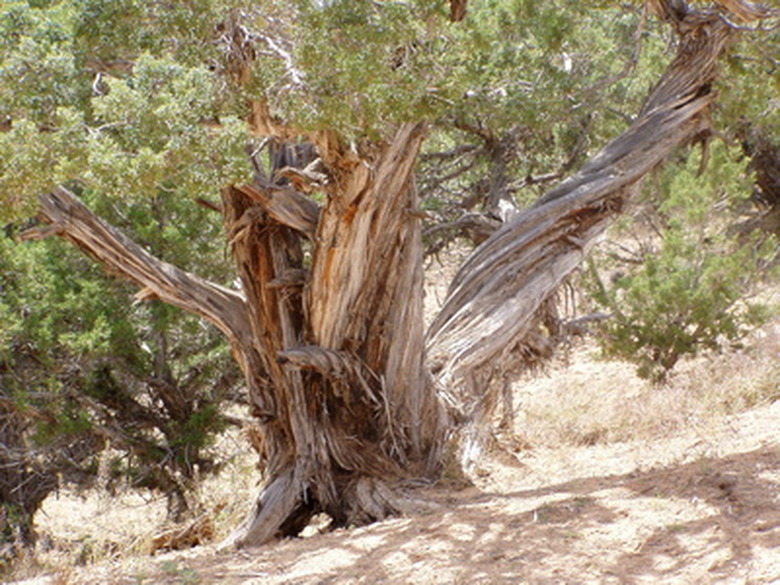Sprays To Kill Cedar Trees
In parts of West Texas, invasive cedars guzzle groundwater and tear up rangeland, which turns plants brown and makes citizens see red. According to estimates by Texas A&M, an acre of salt cedar trees can steal between 300,000 and 1.6 million gallons of drinking water from reservoirs in Texas each year. Cedar trees can also cause a pasture and grazing land to vanish under a dense, brushy canopy. One way to kill these trees is with herbicide sprays.
Tordon K
Tordon K is a broad spectrum herbicide that is used for control of woody brush and weeds. The chemical can be sprayed directly on cedars with a tank and spray wand, or dropped over a stand of trees from an aircraft. Cedar trees pull Tordon K into their roots, which kills the entire plant and prevents new cedar trees from springing up at the roots. Tordon K will remain in the soil up to a year, according to the University of Iowa. This will prevent cedars from returning. For this reason, Tordon K should not be used in land where you want to plant broadleaf or corn crops.
- In parts of West Texas, invasive cedars guzzle groundwater and tear up rangeland, which turns plants brown and makes citizens see red.
Surmount
Surmount contains the chemicals picloram and fluroxypyr as its active ingredients. The herbicide is formulated for brush and broadleaf weeds, which absorb the chemicals through the roots, stems and leaves. Farmers wishing to use an herbicide for brush control on rangeland may choose this herbicide because it will not harm desirable turf species and rangeland grasses. The herbicide may remain in the soil to prevent new cedar trees from sprouting. This is important in rangelands where grazing animals can spread cedar seeds.
Grazon P&D
The active ingredients in Grazon P&D are the chemicals picloram and 2, 4-D. The herbicide is approved for grazing land, but should not be used on corn or broadleaf crops. Traces of Grazon P&D may remain in the soil for several years after the herbicide has been applied. Broadleaf crops or corn should not be planted in soil that has been treated with the herbicide unless a soil test shows that the herbicide is no longer in the soil. Lactating grazing animals should not be allowed to graze pastureland treated with Grazon P&D for seven days after the herbicide has been applied. Eastern Red Cedar is not mentioned on the label of Grazon P&D as a plant that the herbicide can control. However, according to Iowa State University, the herbicide provides good control of scrubby cedar trees and shrubs that are less than 1 foot high.
- Surmount contains the chemicals picloram and fluroxypyr as its active ingredients.
- The herbicide is formulated for brush and broadleaf weeds, which absorb the chemicals through the roots, stems and leaves.
